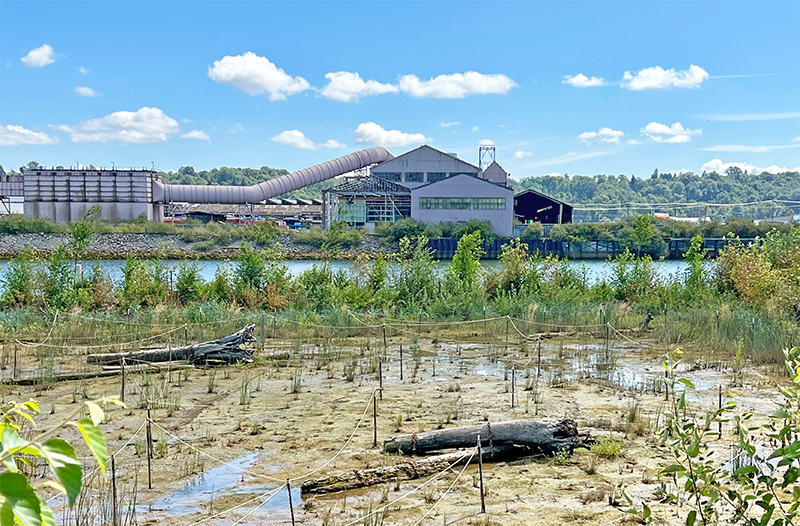
Two of the cleanup sites in the Upper Reach. Cleanup at the Terminal 117 site (foreground) is complete and habitat restoration work is underway. Some interim cleanup work has occurred at the Jorgensen Forge site (background) and more will be needed.
The Lower Duwamish Waterway (LDW) is a five-mile stretch of river, dividing Seattle’s South Park and Georgetown neighborhoods before flowing into Elliott Bay. The LDW has served as a center of industrial activities for more than a century. Over the decades, its riverbed sediments have been polluted with contaminants such as PCBs, arsenic, and other chemicals that pose risks to human health and the environment.
In 2001, the US Environmental Protection Agency (EPA) listed the LDW as a federal Superfund site due to its polluted sediments.
Ecology and EPA agreed that ongoing sources of pollution (such as land with legacy contamination, combined sewer overflows, and stormwater) need to be sufficiently controlled before beginning sediment cleanup. This is to reduce the possibility of polluting the riverbed again and to minimize the need for another cleanup.
We and EPA also agreed that Ecology would evaluate the sufficiency of source control efforts and make recommendations to EPA about whether to proceed with active sediment cleanup work, such as dredging. EPA will make final decisions about proceeding based on Ecology’s recommendations.
Progress in the Upper Reach
Sediment cleanup in the Upper Reach (between S. 102nd St and Duwamish Waterway Park) is slated to begin in 2024 and it’s time for us to make these recommendations for this part of the LDW. With our partners, we’ve made solid progress on controlling sources of pollution. We’ve determined that sources have been sufficiently controlled and we recommend that EPA proceed with cleanup at all but one sediment area. That area is located next to a contaminated upland cleanup site, Boeing Isaacson Thompson, where source control is still in progress.
You can read more about our recommendations in our Source Control Sufficiency Evaluation Report, which you can download from the LDW documents page. You can also learn more at the EPA Roundtable meeting on August 1.
This isn’t the end of our work. Controlling pollution sources is like doing the dishes: you’re never really finished with the job. But getting to this point is a key step toward a healthy river for the people and wildlife of the Lower Duwamish watershed.

